Potřebujeme váš souhlas k využití jednotlivých dat, aby se vám mimo jiné mohly ukazovat informace týkající se vašich zájmů. Souhlas udělíte kliknutím na tlačítko „OK“.
ASTM D7490-13
Standard Test Method for Measurement of the Surface Tension of Solid Coatings, Substrates and Pigments using Contact Angle Measurements
Automaticky přeložený název:
Standardní zkušební metoda pro měření povrchového napětí těles nátěry, substrátů a pigmenty pomocí kontaktní úhel měření
NORMA vydána dne 1.7.2013
Informace o normě:
Označení normy: ASTM D7490-13
Poznámka: NEPLATNÁ
Datum vydání normy: 1.7.2013
Kód zboží: NS-38595
Počet stran: 5
Přibližná hmotnost: 15 g (0.03 liber)
Země: Americká technická norma
Kategorie: Technické normy ASTM
Kategorie - podobné normy:
Anotace textu normy ASTM D7490-13 :
Keywords:
adhesion, contact angles, dispersion and polar components of solid surface tension, solid surface tension, wetting, ICS Number Code 87.040 (Paints and varnishes)
Doplňující informace
| Significance and Use | ||||||
|
5.1 The method described in this standard is based on the concept that the total free energy at a surface is the sum of contributions from different intermolecular forces, such as dispersion, polar and hydrogen bonding. There are other techniques that employ three components (dispersion, polar and hydrogen bonding). These methods are further complicated by needing three to five test liquids and are not practical for routine testing. This method uses contact angles of two liquids to provide data for the calculation of two components, dispersion, γ5.2 Dispersion and polar component data, along with the total solid surface tension, are useful for explaining or predicting wetting or adhesion, or both, of coatings on pretreatments, substrates and other coatings. Low solid surface tension values often are a sign of contamination and portend potential wetting problems. High polar components may signal polar contamination. There is evidence in the literature that matching of polar components of topcoats and primers gives better adhesion.5.3 Solid surface tensions of pigments, particularly the polar components, may be useful in understanding dispersion problems or to provide signals for the composition of dispersants and mill bases. However, comparison of pigments may be difficult if there are differences in the roughness or porosity, or both, of the disks prepared from them. 5.4 Although this technique is very useful in characterizing surfaces, evaluating surface active additives and explaining problems, it is not designed to be a quality control or specification test. |
||||||
| 1. Scope | ||||||
|
1.1 This test method describes a procedure for the measurement of contact angles of two liquids, one polar and the other nonpolar, of known surface tension on a substrate, pigment (in the form of a disk), or cured or air dried coating in order to calculate the surface properties (surface tension and its dispersion and polar components) of the solid. 1.2 The total solid surface tension range that can be determined using this method is approximately 20 to 60 dyn/cm. 1.3 The values stated in CGS units (dyn/cm) are to be regarded as standard. No other units of measurement are included in this standard. 1.4 This standard does not purport to address all of the safety concerns, if any, associated with its use. It is the responsibility of the user of this standard to establish appropriate safety and health practices and determine the applicability of regulatory limitations prior to use. |
||||||
| 2. Referenced Documents | ||||||
|
Podobné normy:
Historická
15.4.2011
Historická
15.5.2010
Historická
1.7.2012
Historická
1.7.2013
Historická
1.2.2014
Historická
1.2.2010
Odebírejte informace o nově vydaných normách ZDARMA:
Chcete pravidelně odebírat informace o nově vycházejících normách z celého světa a to zcela zdarma?
Přihlašte se k odběru. Vše je velice jednoduché a absolutně ZDARMA.
Na výběr máte vydavatele z celého světa.


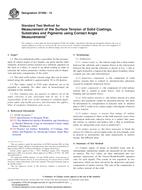
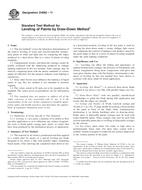 ASTM D4062-11
ASTM D4062-11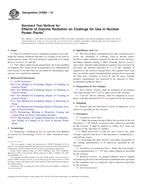 ASTM D4082-10
ASTM D4082-10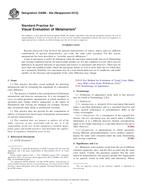 ASTM D4086-92a(2012)..
ASTM D4086-92a(2012)..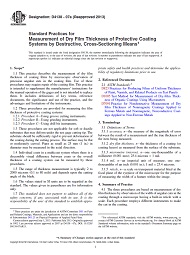 ASTM D4138-07a(2013)..
ASTM D4138-07a(2013).. ASTM D4141/D4141M-14..
ASTM D4141/D4141M-14..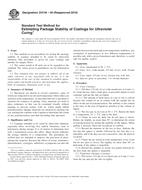 ASTM D4144-94(2010)..
ASTM D4144-94(2010)..
 Cookies
Cookies
